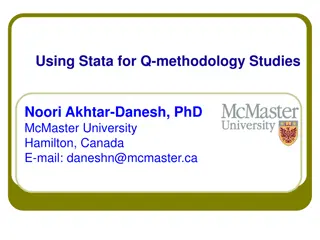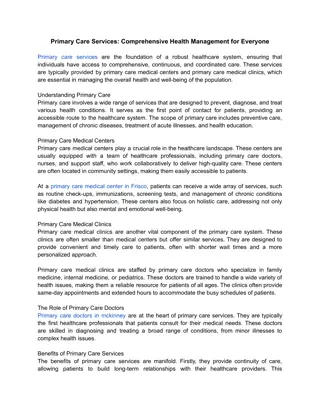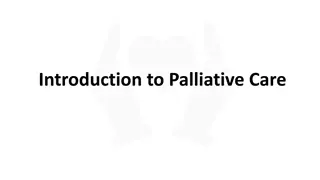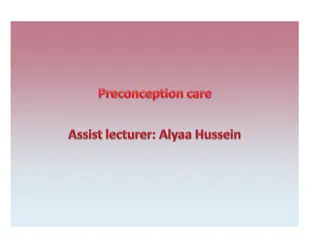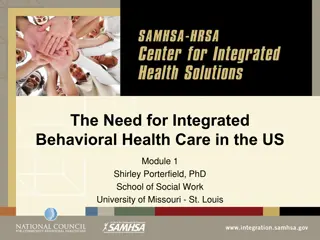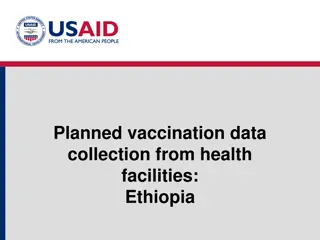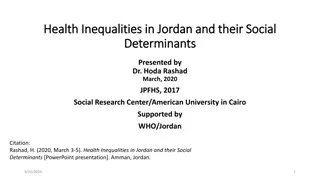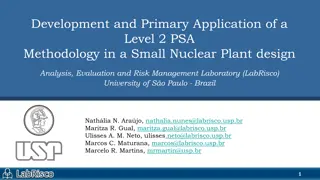Application of Q-Methodology: Health Care Insights
Q-methodology is a versatile technique used in health care research for exploring subjective viewpoints. Developed in 1935 by William Stephenson, it combines quantitative and qualitative methods to analyze perspectives shared by participant groups. Through Q-sorting and statistical analysis, Q-methodology helps identify distinct factors or narratives, making it valuable in investigating health-related issues.
Download Presentation

Please find below an Image/Link to download the presentation.
The content on the website is provided AS IS for your information and personal use only. It may not be sold, licensed, or shared on other websites without obtaining consent from the author.If you encounter any issues during the download, it is possible that the publisher has removed the file from their server.
You are allowed to download the files provided on this website for personal or commercial use, subject to the condition that they are used lawfully. All files are the property of their respective owners.
The content on the website is provided AS IS for your information and personal use only. It may not be sold, licensed, or shared on other websites without obtaining consent from the author.
E N D
Presentation Transcript
Definition and Application of Q-methodology in Health Care Bijan Kaboudi; M.D. Kermanshah University of Medical Sciences ... 1
) ( Q : ) 44 ( : ) ( : " " :
Overview Background Knowledge History of Q Methodology Correlation Factor Analysis Q-Factor Analysis Research Question Sample Selection Concourse Selection Sort Procedure Analysis Interpretation
Background Knowledge History of Q Founded in 1935 by British physicist-psychologist William Stephenson who studied under Spearman
What is Q Methodology (Q)? Measure of Subjectivity Used in Psychology, Marketing / Advertising, Political Based on correlation between item sorts (people, views)
What is Q Methodology? Q is both a quantitative and qualitative technique which is used to study subjective experience It has been widely used to study subjective and debatable issues. It has been used particularly successfully in health related research.
Q: Theory & Practice Q involves sorting a set of statements to represent a perspective or viewpoint (the process of making subjectivity operant) Focuses on viewpoints shared by particular groups of participants By-person factor analysis identifies groups of Q sorts that have been completed in a similar way and can be clearly distinguished from other groups that emerge Factors called perspectives or narratives
Q: Practicalities Q involves 4 main stages: 1. Development of the Q pack (materials) 2. Q sorting (participants) 3. Statistical analysis 4. Factor interpretation
Developing the Q pack Statements Piloted for: Balance Clarity Coverage
Background Knowledge Correlation A measure of the relationship between two or more variables. Correlation coefficient range: - 1 to +1
Background Knowledge Factor Analysis Purposes: - Reduce the number of variables - Identify structure in the relationships between variables Based on correlation between items Data reduction technique; can be used in factor regression Number of Factors determined by cutoff (e.g. eigenvalue > minimum value) Factor Loading correlation between variable and factor
Background Knowledge Factor Analysis-Extraction Methods Process of determining factors Principle Components Method most common method first factor accounts for most variance, next factor is orthogonal (accounts for most remaining variance) Centroid Method Used in Q
Background Knowledge Factor Analysis Rotation Facilitates interpretability Orthogonal (factors are uncorrelated) Varimax Oblique Judgmental Graphical
Background Knowledge Factor Analysis Age Car Education Hobbies Income 47 Lincoln BS Yachting $50,000 Bill 28 Jaguar PhD Travel $30,000 Jane 43 Honda BS Flying Planes $45,000 Luke 52 Chevy BA Antiquing $45,000 Mary 34 Jaguar PhD Extreme Sports $35,000 Steve
Background Knowledge Q-Factor Analysis Based on correlation between people (not items) Computing factors that maximize variance (varimax) Problems: correlations between dissimilar items (interpretation)
Background Knowledge Q-Factor Analysis Bill Jane Luke Mary Steve Age 47 28 43 52 34 Car Lincoln Jaguar Lincoln Chevy Jaguar Education BS PhD BS BA PhD Hobbies Yachting Travel Flying Planes Antiquing Extreme Sports Income $50,000 $30,000 $45,000 $45,000 $35,000
Sample Selection Small Samples (n < 100) People of representative group defined by research question Example: students who did not return to institution; students who graduated
Concourse Selection Concourse = items to be sorted Items must be clear and understandable by subjects Text, graphics, audio, visual (e.g. advertising) Should be representative of major views Can have positive or negative voice Concourse ideally developed by consensus of experts
Concourse Selection Example Sample Statements I had adequate time to complete lab exercises. My instructor used teaching methods well suited to the course. My instructor organized this course well. My lab instructor was available during office hours. Course assignments were interesting and stimulating. Course assignments helped in learning the subject matter. My lab instructor provided sufficient help in the lab. My instructor was well prepared for class meetings. The objectives for the lab activities were well defined. I kept up with the studying and work for this course.
Sort Procedure Intermediate Piles (usually 3-5) to simplify process for subject Optional accompaniment by researcher; interactive questioning, note-taking. Provides qualitative data to enhance quantitative findings
Sort Procedure Scale
Sort Procedure Scale Bi-polar e.g. Very Much Disagree to Very Much Agree not Least Important to Most Important
Analysis Software: PQMethod (free download; DOS program) PCQ SPSS / SAS (Factor Analysis) Factor Analysis Factoring of correlations between sorts Rotation of Factors (Graphical), Minimize mixed loadings
Results Factors consisting of people sharing similar views Example Factors 1 2 3 QSORT 1 0.0524 0.0719 0.5113X 2 0.4026X -0.0551 0.0752 3 -0.1286 0.9247X 0.3582 4 -0.0720 0.1966 0.5738X 5 0.0151 0.1267 0.6273X 6 0.1692 0.0241 0.5749X 7 0.1692 0.0129 0.5076X 8 0.7569X 0.0838 0.4651 9 0.0832 0.0137 0.2976
Results Factors consisting of people sharing similar views Example Factors 1 2 3 QSORT 1 0.0524 0.0719 0.5113X 20.4026X -0.0551 0.0752 3 -0.1286 0.9247X 0.3582 4 -0.0720 0.1966 0.5738X 5 0.0151 0.1267 0.6273X 6 0.1692 0.0241 0.5749X 7 0.1692 0.0129 0.5076X 80.7569X 0.0838 0.4651 9 0.0832 0.0137 0.2976
F1 F2
F1 F2
Interpretation Factor 1 Student Development -5 -4 -3 20 5 9 6 13 11 Agree 18. The total amount of material covered in the course was reasonable. 17. I feel that I performed up to my potential in this course. 31. I learned a lot in this course. Disagree 20. Overall, I would rate the textbook/readings as excellent. 5. Course assignments were interesting and stimulating. 6. Course assignments helped in learning the subject matter. -2 4 24 19 27 -1 32 38 34 36 16 33 0 2 3 22 26 28 40 25 12 +1 1 30 39 8 23 7 +2 15 29 35 21 +3 14 37 10 +4 17 31 +5 18 Factor 1 (2 students) can be defined as a positive view towards individual development while dismissing the effect of accompanying learning materials. The persons on this factor can be portrayed as students who are very satisfied with their own performance in the class.
Interpretation Factor 2 Course Structure -5 -4 -3 11 10 28 17 13 14 Agree 21. I knew what was expected of me in this course. 1. I had adequate time to complete lab exercises. 15. My instructor adapted to student abilities, needs, and interests. Disagree 10. I kept up with the studying and work for this course. 11. Lab facilities were adequate. 17. I feel that I performed up to my potential in this course. -2 7 34 36 22 -1 2 19 23 24 39 9 0 3 4 12 16 25 40 30 38 +1 6 18 26 32 37 20 +2 5 8 29 31 +3 33 35 27 +4 1 15 +5 21 Factor 2 (1 student) shows a student who was given satisfactory support from the instructors, but, as indicated in items 10 and 17, was not as motivated and successful as those on Factor 1.
Interpretation Factor 3 Instructor Quality -5 -4 -3 16 7 11 9 20 32 Agree 27. Progression of the course was logical from beginning to end. 33. My instructor showed genuine interest in students. 15. My instructor adapted to student abilities, needs, and interests. -2 5 6 39 24 -1 2 22 14 26 19 30 0 3 4 13 23 21 31 34 36 +1 18 25 35 17 40 28 +2 38 8 10 37 +3 29 12 1 +4 33 15 +5 27 Disagree 16. Lab sessions were well organized. 7. My lab instructor provided sufficient help in the lab. 9. The objectives for the lab activities were well defined. Factor 3 (5 students) represents a number of students who were satisfied with the instruction in the lecture portion of the course (items 33 and 15) but were dissatisfied with the lab component of the course.
And we know that without the coral, there's a gap in the oceans quality





